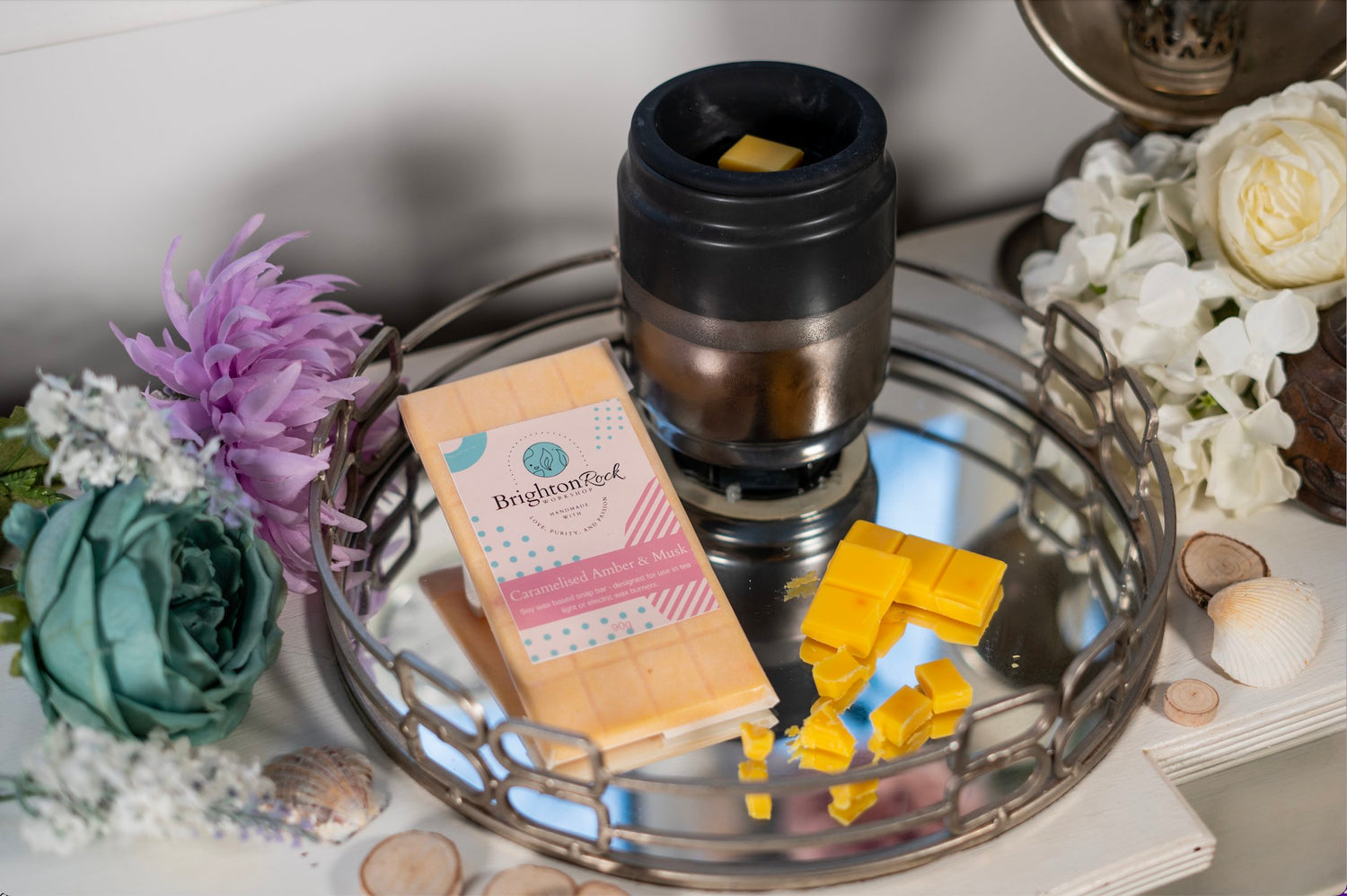Product Care
All of our products have been developed and designed with vigorous testing in place, leaving us confident that you will have gorgeous and high-quality products, as well as a top-notch consumer experience. Here are some tips to make the most out of our products:
Candles
- Always trim the wick to 5mm between burns. A long wick means more surface area burning, which equals a larger and hotter flame. This will make the candle wax disappear faster and can also burn off the fragrance before you get a chance to enjoy it! It also ensures that the vessel does not get too hot, causing a safety hazard.
- Keep away from heavy air flow and draughts. While the room should always be ventilated, it is important not to burn a candle near an open window or door. This is because air flow causes the flame to flicker and dance, giving an uneven burn and releasing soot into the air.
- When lighting a candle for the first time, burn at least until it has melted all the way to the edges, or for a maximum of four hours. This helps the candle to burn evenly, setting the course for it's whole lifespan. Burning candles for only an hour or two at a time can cause it to have a tunnelling effect which after a few burns will cause the wax to fall in on itself, drowning the wick, whilst also wasting a lot of precious wax and fragrance! If it has been burning for four hours but has still not reached the edge, then do not worry! It is likely that it will catch up further down on later burns. A lot of things can affect how a candle burns. The temperature of the room is a common one. All of our candles have been developed and tested in average room-temperature conditions (roughly 18-23°C). So, if it is abnormally warm then the candle will burn faster leaving you with a deeper pool if melted wax. Likewise, if the room is too cold then your candle may not burn as well as it should and could result in less scent release and tunnelling.
- Do not burn all the way down. You should always leave at least 8-10mm of wax at the bottom of the vessel. After this point, the wick can start to struggle and become unsteady which is a safety hazard.
- Try to keep the wax free from debris or broken wick. The easiest way to control this is by keeping the wick trimmed correctly and by not burning for longer than four hours.
- Never place a burning candle directly on top of electrical equipment, flammable surfaces, or any surface you wouldn't want to get damaged in the event of spillage. Sometimes, for reasons beyond our control, candle vessels can break or wax may leak. We can not take any responsibility for damaged home furnishings if this happens, or if the candle gets spilled by the user.
- Keep the wick straight and centred. If the candle has been burning for too long (anything more than 4 hours is too long), it may start to drop to one side. Simply extinguish the flame (always with a snuffer; never blow it out) and straighten it before it sets using a pair of tweezers or wick dipper.
- Don't let the flame get too big. A large flame will cause faster burning and safety concerns. If it looks like it may be too large (generally 4cm from top to bottom is too big), then extinguish, trim, and light it again.
Wax Melts & Burners
- As is the cast with most wax or oil burners, you should always use an unscented 2-hour tea light. Any longer than this can cause the burner and/or wax to get too hot, risking cracks and a fire hazard.
- For electric burners, don't leave them turned on overnight.
- Never leave a flame unattended. Never leave within reach of children or pets, and never leave on top of electricals or soft surfaces. Always ensure that there is nothing near the burner that could catch fire.
- For cleaning, we have found it best to pour the old wax out whilst it is still molten, onto paper towels, and into the bin once cooled. Never attempt to clean the burner whilst it is still hot. Similarly, never expose the burner or molten wax to water whilst still hot, as this could crack or spit hot wax.
- Never use polishes or cleaning sprays on your burner, as these are flammable and can cause explosion.
- Remove all packaging before using our wax melts, and use only a few pieces at a time, keeping all wax products away from children and pets.
- When taking out and old tea light to replace it, always wait until the wax and the burner has cooled fully.
- If you suspect your burner may be broken or cracked, do not risk using it.
- Do not use wax melts in oil burners unless it is clearly stated that the product is suitable for melting wax also.
- Do not use any type of wax burner near water. This could cause the hot wax to spit out.
Soaps
- When not in use, make sure that the soap is not sitting in or submerged in water. This will give you a harder and longer-lasting bar.
- If you have any sensitivities and our soap causes irritation, please do not continue to use. All of our soaps are formulated to provide nourishment to all skin types, but irritation may still occur.
- Please read the full ingredients list shown on the packaging, especially if you have any allergies.
Reed Diffusers
All of our reed diffusers have been designed and tested using the same space which can differ from the space you are using. There are many factors which will affect the performance of a reed diffuser, such as the size of the room it is used in, the temperature of the room, the airflow, and exposure to direct sunlight.
Our diffusers are pleasantly strong in anything from a small bathroom to a large double bedroom. For open plan kitchen/living areas, you may want to use two diffusers on opposite sides of the room to achieve the best results.
Reed diffusers tend to work better in spaces where there is some airflow, for example, near a window, door, or entryway. They work best when kept up high, around an average adult's shoulder level.
Since we exclusively use high-quality fibre reeds, they do not need to be touched or flipped once they are in the fragrance solution. Simply space them out and let them get to work.
Always use the exact reeds that were supplied with the diffuser. Do not try to use a different type of reed or a different amount, as we can not guarantee best performance of the product.
Please, if you have any questions about how to care for our products or any questions about best practices, testing, or cosmetic safety reports, then please get in contact at lois@brightonrockworkshop.com

